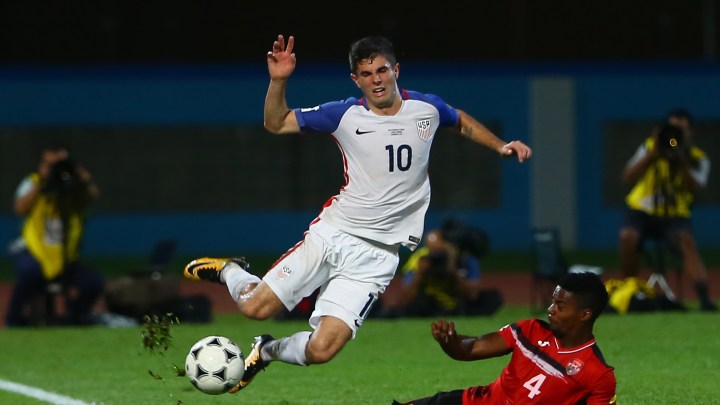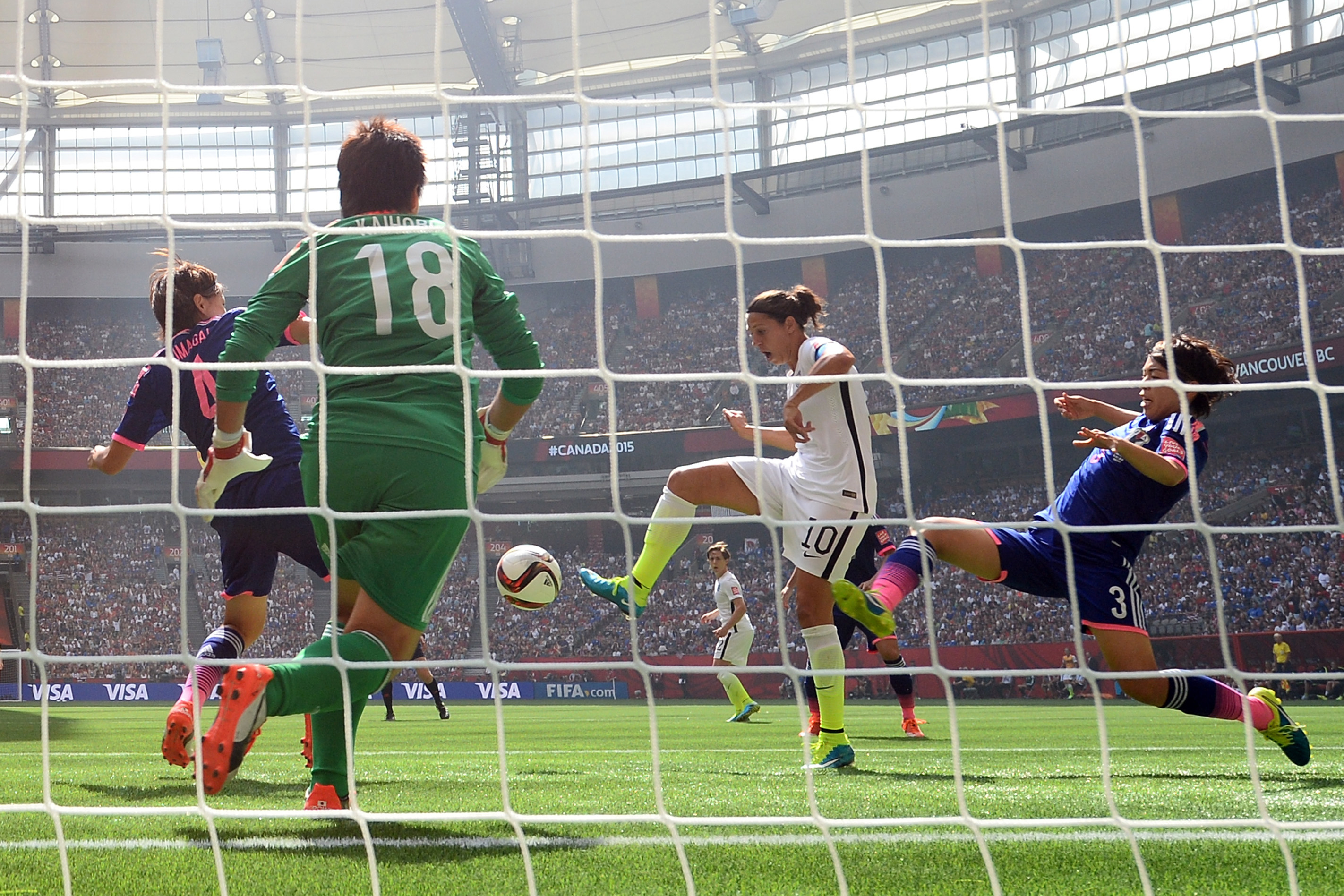
How the financial structure of American men’s soccer limits success on the world stage
How the financial structure of American men’s soccer limits success on the world stage

Some 40 or 50 kids, ages 7 to 19, work on their passing skills on a northeast Austin, Texas, soccer field. The practice is being run by Upper Ninety, a youth development program. But what makes Upper Ninety different from other soccer programs is it’s free.
That’s a great thing for 18-year-old Samuel Osezua, who moved here from Nigeria about a year ago.
“Programs like this have helped me settle in faster because since it’s free, it’s attractive to everybody,” he said.
In the United States, elite competitive club soccer tends to be expensive. Membership dues for a team that’s affiliated with the official U.S. Soccer organization — as opposed to a recreational league or a school team — can cost $5,000 a year. That’s not to mention travel costs. Those could run a family thousands of dollars over the course of a season, too.
The founder of Upper Ninety, Kaitlin Swarts, grew up in Austin and played club soccer most of her life. She saw soccer getting more and more expensive and decided to do something about it.
“I’m really fortunate to have been born into a family that could afford that, but that’s just not the reality for most people,” Swarts said.
When the English Premier League gets underway this weekend, all eyes (at least many American eyes) will be on a 20-year-old phenom from Hershey, Pennsylvania, named Christian Pulisic. He’s a bit of a curiosity because there’s only a handful of American men who play soccer in elite world leagues.
The fact that soccer is often unaffordable tends to limit the potential of U.S. men’s soccer. Youth clubs are not feeding enough players to the national team, which wasn’t even good enough to qualify for the World Cup in 2018. In the United States, the financial burden of developing elite young players falls to parents.
“In Europe the clubs are incentivized to develop those players because once they become adults, they can either contribute to the senior team or they can be sold for many millions of dollars to a rival club,” said Tom Farrey, executive director of the Sports & Society Program at the Aspen Institute.
A top German league team sent the young American, Pulisic, to Chelsea late last year. Chelsea paid a whopping $73 million to sign Pulisic.
If Pulisic were from Europe, though, the youth club he played on before he turned pro in Germany would be getting a fat 10% slice of that $73 million. It’s called a solidarity payment and isn’t part of the process in the U.S.
Tom Cove, president and CEO of the Sports & Fitness Industry Association, said for some American clubs, that solidarity payment could mean a lot.
“With that kind of money, you can kind of serve many needs, really focusing on the elite and developing that best player, but also reaching back into the community,” he said. “That’s a significant amount of money to reach a local club.”
The governing body here, U.S. Soccer, has chosen to opt out of the system. One reason for that: Professional American players worry that when a big-time club like Chelsea has to pay this solidarity tax, they’re going to get less money.
Ultimately this means PA Classics — the developmental club of Pulisic’s childhood — won’t get a dime from his transfer. Steve Klein, the head of PA Classics, declined an interview.
But what about the U.S. Women, who just won another World Cup? Does the financial structure of U.S. Soccer hold women back, too? Farrey at the Aspen Institute said not really.
“In a nation of 330 million people, we just have so many more girls playing soccer,” he said. “Our ability to put together a roster of 20 or 24 players are going to be pretty good, is infinitely easier than it is in a lot of other countries.”
Back in northeast Austin, Swarts of Upper Ninety isn’t too worried about elite youth clubs getting money for their star players. Her organization isn’t a club team and wouldn’t be eligible for those payments, anyway. Her goal is totally different.
“Soccer should be a community thing, and you shouldn’t have to have all of the time and all of the money to enjoy it,” she said.
There’s a lot happening in the world. Through it all, Marketplace is here for you.
You rely on Marketplace to break down the world’s events and tell you how it affects you in a fact-based, approachable way. We rely on your financial support to keep making that possible.
Your donation today powers the independent journalism that you rely on. For just $5/month, you can help sustain Marketplace so we can keep reporting on the things that matter to you.


















